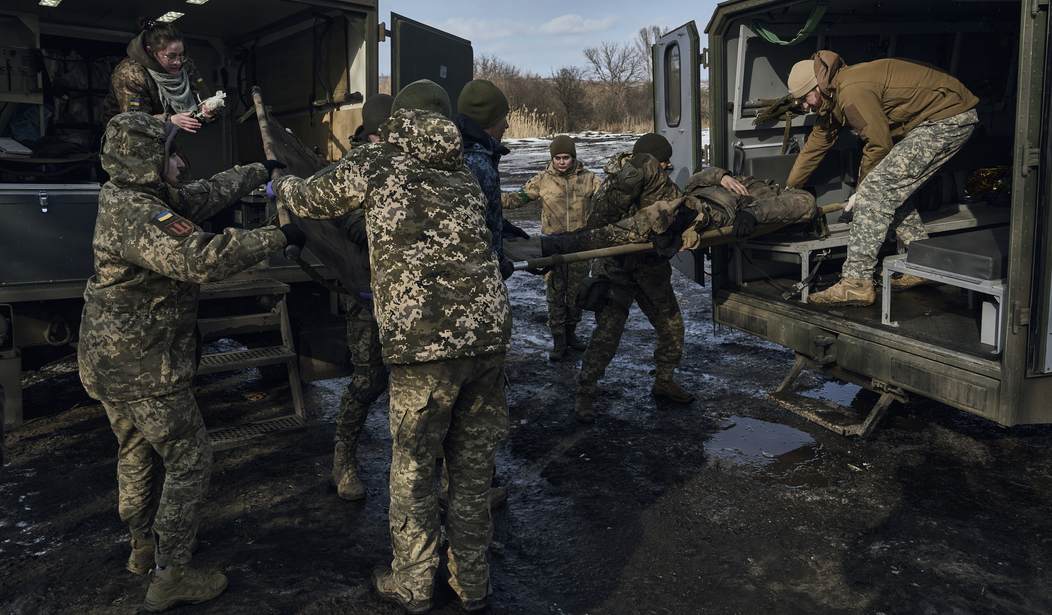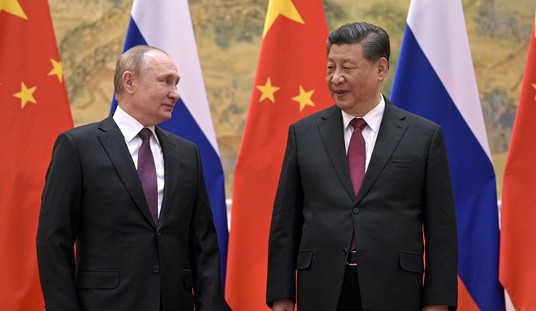All of Bakhmut fell under Russian control over the weekend, after a ten-month battle for a city of no strategic significance, and at the cost of an estimated 100,000 Russian casualties just since December, including perhaps as many as 20,000 killed. Wagner Group mercenary troops took over from Russian regular forces during the winter and can claim credit for the win.
Russian strongman Vladimir Putin “congratulated the assault units of Wagner as well as all servicemen of units of the Russian armed forces who provided them with the necessary support and flank cover,” according to TASS.
Reliable figures for Ukraine’s losses are harder to come by, but a local Russian official claims 15,000-20,000 KIA.
Up until recent weeks, Russia had tried to encircle Bakhmut in what Russian media calls a “cauldron,” in which cut-off UAF troops could be easily defeated. The problem was that Russia was never able to complete the encirclement and switched to a frontal assault, block by bloody block and sometimes house by house. Wagner troops weren’t good enough to survive in the open terrain around Bakhmut. But veteran soldiers leading Wagner’s disposable convicts-turned-soldiers was a potent enough mix to win in urban terrain where UAF’s advantages were negated.
It was the bloodiest battle in Europe’s bloodiest war since WWII and, whatever Bakhmut’s actual value, Russia’s first win since last year’s humiliating triple defeats around Kyiv, Kharkiv, and Kherson.
While Wagner was raising the Russian flag over the last Ukraine-held rubble in a place that used to be a city called Bakhmut, Ukraine President Volodymyr Zelenskyy made a very brief appearance at the G-7 summit in Japan. There, Western leaders promised increased training for UAF and even more advanced weapons — including F-16 jet fighters. “We will get the jets,” Zelenskyy said. “So far, I cannot say how many of them, this is not a secret, I truly don’t know that yet.”
Meanwhile, UAF made small gains north and south of Bakhmut, perhaps hoping to make their own cauldron around the occupied city.
UAF has been gearing up both new and reconstituted units with frontline NATO main battle tanks and other armored vehicles, presumably in preparation for a summer counteroffensive. I’ve written before that, unlike last summer and fall, none of this year’s options for offensive operations are very appetizing. The Donbas region, where Bakhmut is located, is heavily fortified by both sides. Retaking the left bank of the Dnipro River (to complete Kyiv’s reconquest of the Kherson region) would involve a difficult river crossing. An attack into the Zaporizhia region towards Melitopol has the most favorable terrain but would also leave UAF exposed on both flanks.
The real test here might not be whether Kyiv has the manpower, weapons, and training to launch a major counteroffensive this summer, but whether or not Russian forces are too exhausted after Bakhmut to properly resist. Wagner chief Yevgeny Prigozhin said on Sunday he’ll withdraw his battered mercenary force from Bakhmut by June 1. “We are handing over our positions to (Russia’s) Defence Ministry and on the 25th (of May) we are leaving the conflict zone.”
The Battle of Bakhmut is over after nearly ten months of nasty fighting. But without a diplomatic breakthrough that absolutely nobody seems to be working towards, the war for Ukraine might just be getting started.
Exclusively for Our VIPs: Florida Man Friday: Watch Him Flee in a Stolen Fire Truck










Join the conversation as a VIP Member